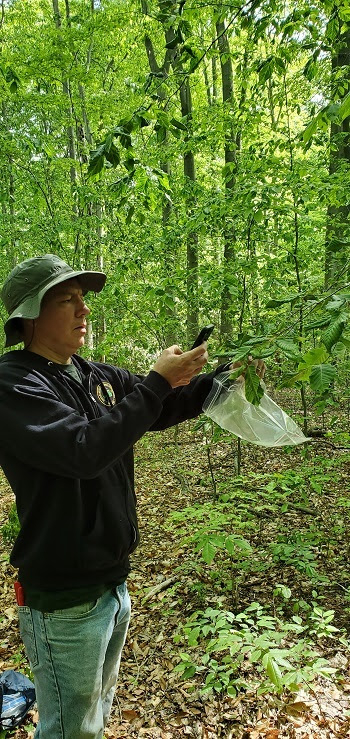Michigan Foresters Harvesting Ash, Beech to Prevent Timber Loss
Emerald ash borer, beech bark disease infecting hardwoods…
Foresters from the Department of Natural Resources and Michigan Technological University are examining more than 30,000 acres of state forest land for signs of emerald ash borer (EAB) and beech bark disease (BBD). The process of harvesting ash and beech from identified areas is ongoing in an attempt to recover timber value before the resources are killed by the two exotic forest pests.
EAB and BBD are killing ash and beech in hardwood forests throughout the state. Each pest is specific to its host, only killing that particular tree species.
The work is funded in part by federal grants from the Great Lakes Restoration Initiative and the Pest and Disease Revolving Loan Fund, and are administered by the USDA Forest Service’s State and Private Forestry, Forest Health Program.
Since the discovery of BBD in 2000, and EAB in 2002, millions of beech and ash in the state have been killed. BBD feeds on the sapwood of beech trees creating feeding scars that are used by a fungus to invade the sapwood, killing the tree. In addition to its timber values, beech is an important mast, or nut, producer for wildlife. EAB is a beetle that feeds in the sapwood of ash trees, killing them.
Despite some evident mortality, current surveys indicate that many forests in the Upper and northern Lower peninsulas have not yet been impacted. Foresters are identifying areas with greater densities of higher-quality beech and ash and targeting them for harvest prior to infestation, or within a year following infestation.
“We are using criteria including proximity to the nearest infested site, infestation, size, density and quality of trees, and accessibility, in order to prioritize which areas need attention,” said Bill O’Neill, chief of the DNR’s Forest Resources Division, who also serves as state forester. “Considering other factors important to maintaining healthy forests, harvests are being scheduled to remove the beech and ash and regenerate the stand to a desired, productive species mix. The goal is not to remove all beech or ash, but to reduce them to a level that the mortality will not significantly impact the quality of the remaining trees or the productivity of the forest.”
The ash and beech harvests are conducted in consultation with DNR wildlife biologists and other resource professionals who review timber sales for their impact on forest value.
In addition to the harvests, a part of the federal funds can be used to write forest management plans on private lands that have ash as a component of their forests. For further information on this program, please contact the DNR’s forest stewardship coordinator Shawna Meyer at 517-335-3355 or visit www.michigan.gov/dnr-grants.






